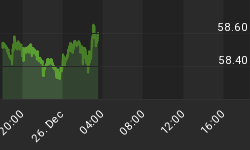The U.S. Treasury intends to resume issuing long-dated treasuries. So far as managing the funded debt goes, this is a sound step. It will lock in some relatively low long rates. For market participants, this will provide a long bond with a low coupon, which offers the biggest trading swings on the inevitable changes in long interest rates.
It takes bold and experienced traders to take advantage of the opportunities offered in the long end.
In 1779, Samuel Johnson observed: "Claret is the liquor for boys; port is for men; but he who aspires to be a hero must drink brandy."
These days, heroism is found in coloured martinis and the long bond. Some twenty years ago, there was an article along the lines of "Real Men Trade Long Bonds". We would still go along with this and note that the ten-year, like Chardonnay, is for boys.
Most of the fashion in the shorter maturities is due to Europe, which merits some review. Over the past 100 years, Europe's political and consequent financial instability made it a rare accomplishment to have a liquid money market, let alone a liquid market for long-dated issues. Perhaps when Europe abandons its dreadful and endless experiment in socialism ( Moscow on the Maastrich), a liquid market for long maturities will develop.
This could take a couple of decades when eventually the trading of the 10-year will be relegated to those who have just reached the drinking age.
Of course, we all know that the biggest bang from the trading dollar is obtained from the lowest coupon with the longest maturity. In this regard, British Consols with a 3% coupon and perpetual term are ideal. We'll have to do some thinking about a perpetual "zero".
Canada used to have a 3% "Perp", but the "Federasts" repudiated their obligations by forced redemption. With a bureaucracy dedicated to lowering interest rates, having a 3% issue outstanding when the long yield was at 19% (1981) was just too embarrassing.
Throughout the history of long governments in the senior currency, the most violent swings have occurred with the culmination of the "old" era of inflation. For example, the 30-year went from 14.7% on May 5, 1981 to 12.6% on June 16, 1981. The next panic took it to 15.2% on October 26, 1981, from which the yield plunged to 12.8% on November 22, 1981. The eventual low was 4.24% on June 13, 2003.
Now that was a fabulous bull market, with the best investment and trading returns made in the long end. The lower the coupon - the better!
Since June of last year and in the face of consistent bearish advice from the establishment, we have been generally long as yields declined from 5.61% in mid-2004 and will remain generally long until the action blows out - probably with some fanfare from the establishment.
In returning to the bigger picture, the next and typical phase of interest rate volatility can occur at the end of a great financial mania. On the short end, rates have recorded the most outstanding plunges. Following the 1873 bubble, the senior central bank's (Bank of England) discount rate plunged from 9% to 2 ½ %. Following the 1929 mania, treasury bill rates plunged from 5% to 0.06%. Following the 2000 extravaganza, the bill rate plunged from 6.42% in 2000 to 0.81% in mid-2003.
Other events should be emphasized. At some point, the investment establishment could conclude that conditions are again heading towards "deflation" and make the knee jerk that rates for long treasuries should decline. However, the track record shows that the most severe deflation of stocks, commodities, and wages occurred from mid-1931 to late 1931. With this, the long bond yield jumped from 3.13% to 4.28%, a substantial increase for those improperly positioned.
The shortest explanation for this was the collapse of liquidity in the corporate bond market as considerable amounts of debt became unserviceable.
Wrap: There is a considerable amount of money to be made in trading long treasuries and that will be enhanced by the new issuance of some low-coupons.
Wussses, of course, will be wearing bicycle helmets, sipping white wine, and stumbling around in the 10-year maturities.
Real men will be maxing out on the profits to be reaped in long bonds.
Over the past year, returns from the 10-year have been diminished by curve flattening as shorter rates increased. This is typical of a boom, but long rates declining was atypical enough to prompt Greenspan's "conundrum" query.
The reason why we remained long was that the establishment was short of duration and long treasuries were remote enough from rising short rates to become an asset play. Now, with softening commodities the bond rally has further to go and our colleague, Ross Clark, has refined the model that has provided some reliable entries and exits in this kind of financial volatility, and particularly as it is exacerbated in the long end. "Exits are good." We will advise.















